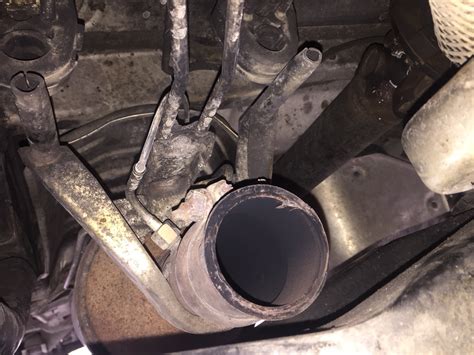Sprinter DPF Delete: Post-Pipe Cutting Maintenance
Deleting the Diesel Particulate Filter (DPF) from your Mercedes-Benz Sprinter van offers potential performance gains and can eliminate the costly repairs associated with DPF failures. However, this modification necessitates careful consideration of post-pipe cutting maintenance to ensure your engine's longevity and prevent future issues. This article will delve into the crucial aspects of maintaining your Sprinter after a DPF delete, addressing common concerns and providing practical advice. This information is for educational purposes only and should not be considered an endorsement of DPF removal. Check local regulations before modifying your vehicle's emissions system.
What Happens After a DPF Delete?
Removing the DPF alters your Sprinter's exhaust system significantly. The DPF is designed to trap soot and other particulate matter. Without it, these particles are now expelled directly into the atmosphere. This necessitates attention to several key areas:
Increased Soot and Particulate Matter
The most immediate consequence is a dramatic increase in soot and particulate matter released from your exhaust. This can lead to increased carbon buildup in various engine components, impacting performance and potentially causing damage over time.
Potential for Increased Engine Wear
The higher exhaust gas temperature resulting from the DPF delete can also contribute to increased engine wear. The increased backpressure before the delete is now absent, potentially affecting the engine's efficiency and lifespan.
Emissions Regulations and Legal Compliance
Crucially, removing the DPF makes your Sprinter non-compliant with emissions regulations in many jurisdictions. Operating a modified vehicle in such a manner can lead to significant fines and legal repercussions.
Essential Post-DPF Delete Maintenance
Proper maintenance is paramount after a DPF delete. Ignoring these aspects can lead to costly repairs and potential engine damage.
Regular Oil Changes
Frequent oil changes are crucial. The increased soot and particulate matter can contaminate the engine oil faster than normal, leading to premature wear and tear. Consider using a higher-quality oil and shortening your oil change intervals.
Exhaust System Inspection
Regularly inspect your exhaust system for leaks, cracks, or damage. The increased exhaust gas temperature and flow can weaken the system over time.
Engine Monitoring
Closely monitor your engine's performance. Pay attention to any unusual noises, changes in power, or increased smoke from the exhaust. These could indicate potential problems.
Addressing Common Concerns After a DPF Delete
Many Sprinter owners have questions after modifying their exhaust system. Let's address some of the most frequently asked:
Will my Sprinter run differently after the DPF delete?
Yes, you might experience a slight increase in power and potentially improved fuel economy, but this improvement comes at the cost of increased emissions. You may also notice a change in the exhaust note.
How often should I change my oil after a DPF delete?
You should significantly shorten your oil change intervals, potentially changing the oil every 5,000 miles or even sooner, depending on driving conditions and oil analysis results.
Can I use a DPF delete kit with a tune?
While some tuning solutions may be marketed alongside DPF deletes, it's crucial to find a reputable tuner who understands the implications for your engine's health. Improper tuning can lead to severe engine damage.
What are the legal implications of a DPF delete?
DPF deletion is illegal in many regions. Be aware of the local regulations and potential penalties before undertaking this modification.
Conclusion
Removing the DPF from your Sprinter can offer certain perceived advantages, but it requires a proactive and responsible approach to maintenance. The increased risk of engine damage and non-compliance with emissions regulations needs to be carefully weighed against any potential benefits. Regular inspections, frequent oil changes, and close monitoring of the engine's performance are crucial to mitigate the risks associated with this modification. Always prioritize responsible vehicle maintenance and adhere to all relevant laws and regulations.

